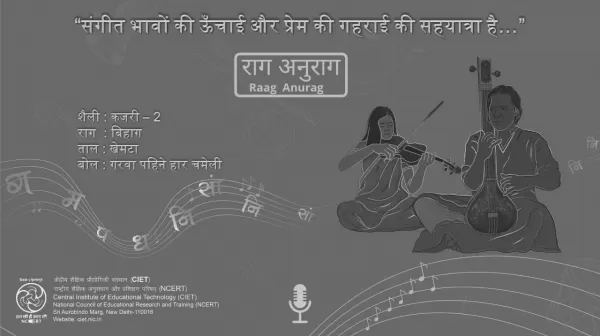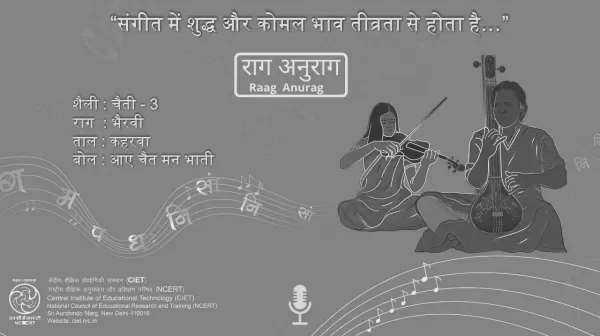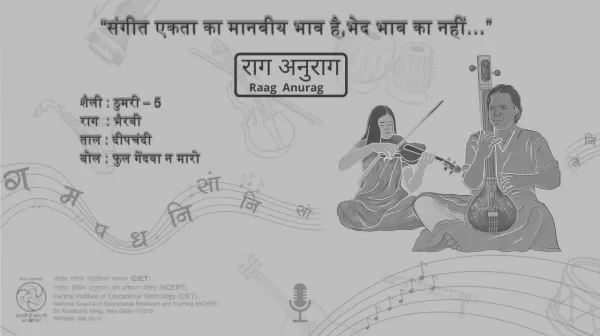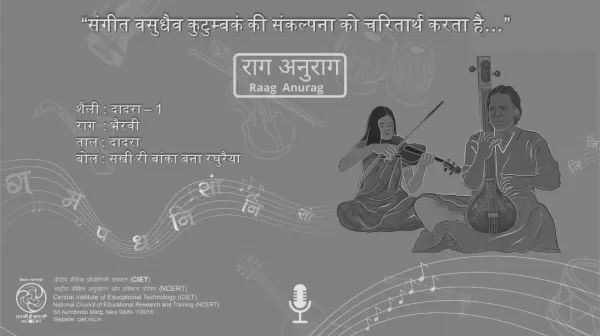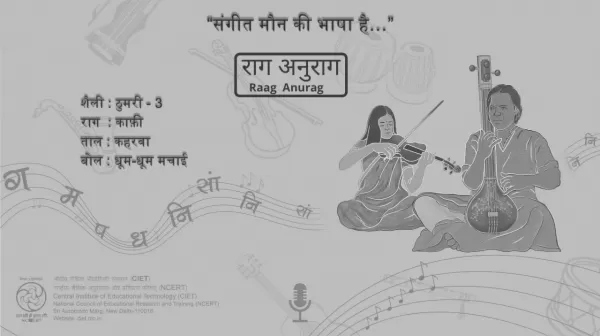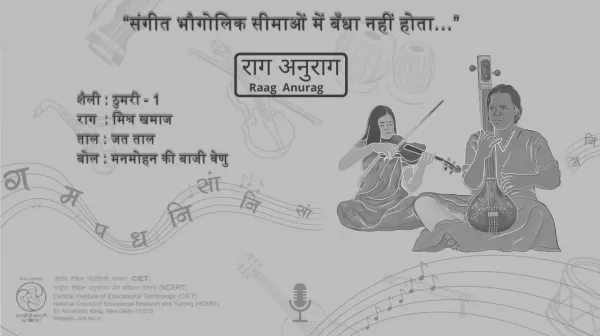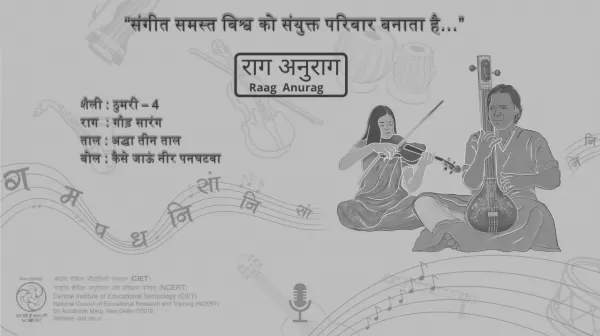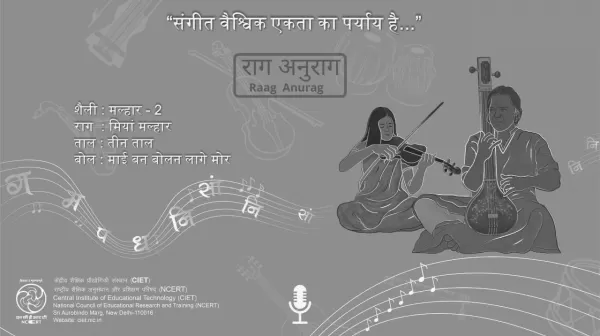Kajri 2 Rag "Bihag Garva Pahine Haar Chameli"
Kajri is one of the semi classical styles of Indian music originated from the folk music of the Indian state of Uttar Pradesh. It is mainly sung in the month of Savana, which is mid-July to mid-August in accordance with the English calendar. So let us listen to Kajri which is based on rag Bihag. Let’s have some basic information about Rag Bihag. This Rag is originated from Bilawawl that. In the ascension of this rag, Re and Dha (Re and La ) are forbidden. Both Ma (Fa) notes are used in it whereas all other notes are natural. The Wadi swara is Ga (Me) and the Samwadi swara is Ni (Ti) This Rag is sung at the 2nd watch of night. Music is not confined to the geographical boundaries. Indian Ragas can be played not only in Indian musical instruments but in western musical instruments as well. Indian music and ragas are being played globally in all other instruments of many cultures and countries. Indian music is being propagated all over the world and liked so much by different world communities. Moreover, nowadays a revolutionary flavor of music has emerged called “Fusion music” a mix of traditional Indian and western musical instruments. Glossary of Indian-Western Music Sargam- Sa Re Ga Ma Pa Dha Ni (Saptak) Notation - Doh Re Mi Fa Soh La Ti Doh (Octave) {In Hindustani music there are 7 notes shown called Saptak i.e. 7} {In Western music there are 8 notes shown thus called Octave i.e. 8 } Aaroh- Ascension (Lower to higher notes) Avroh- Dissention (Higher to lower notes) Pakad – Insignia/ Recognition/Restricted melody grip Bandish/Rachna- Determined melody structure Shuddh Swara- Natural Note, Tonic Komal Swara - Flat (b)- One semitone lower in frequency Teevra- Sharp (#)- 1 semitone higher in frequency Taal- Beat Shaili- Style/Genre Audav- Pentatonic Scale with 5 pitches or notes per octave Shadav- Hexatonic scale with 6 pitches or notes per octave Sampurna- Septatonic scale with 7 notes or pitches per octave Thhat- Family Wadi is the primary note of any rag whereas usually the 5th note is Samvadi. Chord- Notes - Sa, Ga, Pa, Sa- (Doh, Me, Soh, Doh) All Natural notes=Major. If Ga (Me) is one semitone flat (Komal) it is Minor chord. Example- If any note is to be shown as Komal (flat), it is denoted as the sign of small b If any note is to be shown as Teevra (Sharp ), it is denoted as the sign # The rendering of any Rag may be in Major or in Minor chord regardless of any scale. Major chord means= All notes are natural; Example- Formation of Major chord- Sa, Ga, Pa, Sa {naturel} Minor means=One or more than one notes are either flat or sharp for one semitone. Formation of Minor chord= Sa(Natural). Re (Sharp or Teevra), Ga (Natural), Pa (Natural)
Playlist
Category
- 35 views

